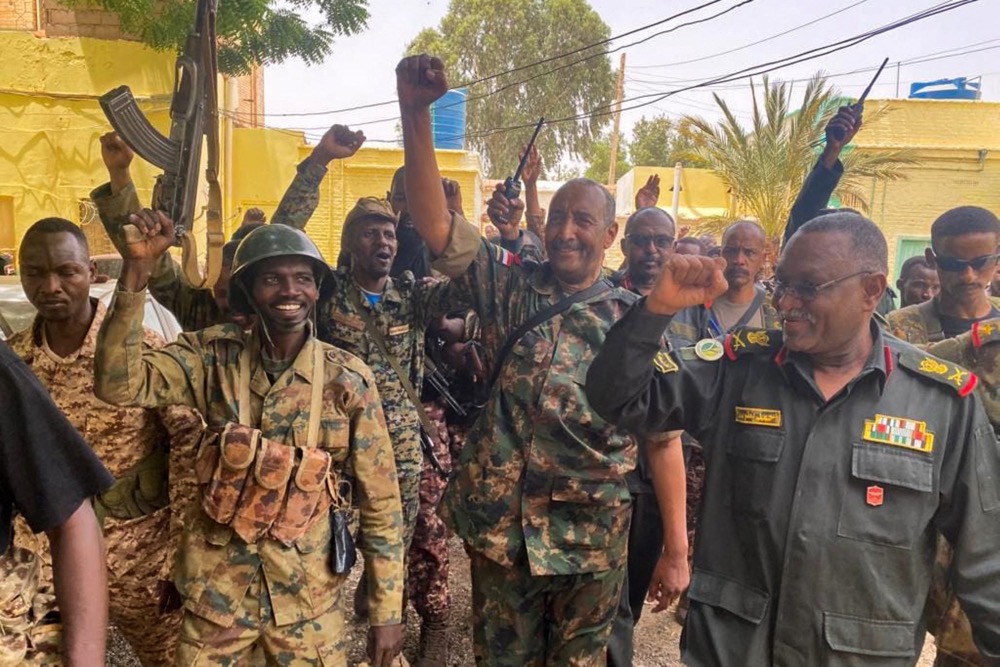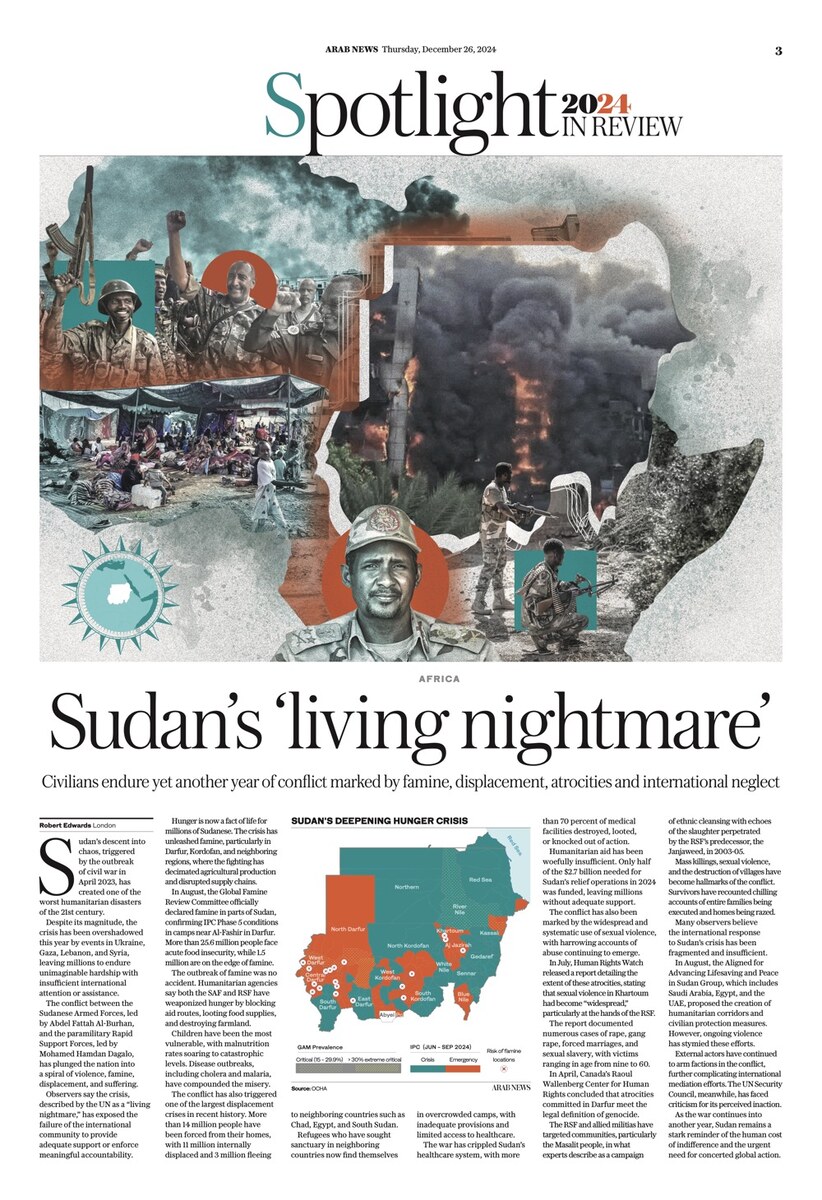LONDON: Analysts have said that the blast that struck Iran’s most critical nuclear facility on April 11 is another significant event in a decades-long shadow war between Tehran and its regional adversary Israel.
They say the sabotage has not only exposed Iran’s vulnerability to betrayal at the hands of its own population, but its tepid response has revealed its desperation for sanctions relief above all else.
Unnamed intelligence officials from Mossad told Israeli media and the New York Times last week that the mysterious Natanz explosion was their handiwork. And, according to Yossi Mekelberg, associate fellow with the Middle East and North Africa program at Chatham House, it is a continuation of the spate of blasts, blackouts, and fires that swept across the Islamic Republic last year — but with one major difference.

“What has changed from last year is how public it is. (Israel) is ready to take responsibility. From a shadow war it has moved to the forefront,” Mekelberg told Arab News.
“This confrontation has been taking place for two decades now, at least. Cyberattacks, assassinations of scientists, attacks on ships — this is something that is ongoing. What you have seen in the last year or so is that it is becoming open, from covert to overt.”
In the past year alone, Iran has been rocked by a relentless series of attacks, assassinations, and sabotages. The country’s top nuclear scientist was killed in a sophisticated attack.
Their entire nuclear archives were stolen and smuggled out of the country, and nuclear, military, and logistics sites across the country have suffered from a series of mysterious setbacks.

An image grab from footage obtained from Iranian State TV IRIB on April 17, 2021 shows the portrait of a man identified as 43-year-old Reza Karimi, saying the intelligence ministry had established his role in last week's "sabotage" on the Natanz nuclear facility. (AFP/File Photo)
According to Mekelberg, these incidents have not only hindered Iran’s economy and nuclear program, but also exposed a fundamental weakness in the regime.
“They have a real issue inside their nuclear program,” he said. “The idea that their top scientist, they couldn’t protect him, and that someone managed to take your nuclear archives out of the country — that is not something you can simply put in your pocket.”
Iranian state television named 43-year-old Iranian national Reza Karimi as the prime suspect in the April sabotage — but said he had already fled the country in the hours before the blast occurred.
Mekelberg and other experts believe the involvement of an Iranian national is indicative of the regime’s core vulnerability: Turncoats within its population, and even within the nuclear program itself.
INNUMBERS
Iranian oil
* $40 - Price per barrel of oil used in Iran’s budget calculations.
* 300,000 - Estimated oil exports in barrels per day (bpd) in 2020.
* 2.8m - Iranian oil exports in bpd in 2018.
“They have a real issue with security. I assume that the more things like this happen, the more paranoid they become about who they can trust, who is working with foreign agencies. Obviously, someone is,” Mekelberg said.
Olli Heinonen, a non-proliferation expert and distinguished fellow at the Washington-based Stimson Center, believes the sophistication of the Natanz attack means there is little doubt that local collaborators from within the regime enabled it.
“Those who have designed and executed these actions have insider information and highly likely local contributors,” Heinonen told Arab News.

This handout satellite image provided by Maxar Technologies on January 8, 2020 shows an overview of Iran's Natanz nuclear facility, south of the capital Tehran. (AFP/Maxar/File Photo)
Like Mekelberg, Heinonen highlighted Iran’s apparent ineptitude in defending even its most critical nuclear facilities and pointed to the stark contrast between the country’s record and another global pariah state’s nuclear program.
“It is worth noting that we have not heard about similar incidents in North Korea,” he said. “It is evident that the (Iranian) security forces have not been able to protect the assets as the leadership had expected.
“This does not come as a surprise. Not all Iranians, including technical professionals, buy the reasonability of the enrichment efforts, the investments for which could be used better elsewhere, even within the nuclear program.”
Tehran has admitted that the attacks caused serious damage at the Natanz facility. Last week, Alireza Zakani, a regime hardliner who heads the Iranian parliament’s research center, referred to “several thousand centrifuges damaged and destroyed” in an interview on state television.

A handout picture released by the official website of Iran's Revolutionary Guard on August 25, 2014, shows an alleged Israeli drone that was shot down above the Natanz uranium enrichment site. (AFP/File Photo)
“From a technical standpoint, the enemy’s plan was rather beautiful,” the head of the Iranian parliament’s energy committee said. “They thought about this and used their experts and planned the explosion so both the central power and the emergency power cable would be damaged.”
Heinonen said the attacks have “certainly slowed production” of 20 percent enriched uranium, which is above the enrichment level needed for nuclear power, but far below the 90 percent required for weapons-grade uranium.
However, he cautioned that production could begin to ramp up again within three months of the attack, and Tehran’s promise to begin enriching uranium to 60 percent in response to the attack could act as a springboard toward rapid development of a nuclear bomb.
“In a short term (60 percent enrichment) does not contribute much to breakout time, but it demonstrates the fact that uranium enrichment is mainly designed to build a nuclear latency; to be in a position to relaunch in short interval a full nuclear weapon acquisition program, if such a decision is made,” he said.
The response to the attacks is part of a delicate balancing act by Tehran, according to Nader Di Michele, an Iran-focused analyst at political risk consultancy Prelia.

This handout powerpoint slide provided by U.S. Central Command damage shows an explosion (L) and a likely limpet mine can be seen on the hull of the civilian vessel M/V Kokuka Courageous in the Gulf of Oman, June 13, 2019. (AFP/File Photo)
“They do not want escalations but the government has to show a response in terms of its foreign policy. That could be aimed at international actors or even its domestic population,” he told Arab News.
Beyond increasing uranium enrichment, it was reported that unknown actors targeted an Israeli-owned cargo ship in the following days. However, Di Michele thinks the damage caused by that attack was, by design, minimal compared with the devastation caused by the Natanz attack.
“There always has to be a response to these attacks, but I think the Iranian delegation understands that there is a limit to what they can do if they want sanctions relief.”
Di Michele said if the ongoing negotiations in Vienna prompt a lifting of sanctions and release of various assets that, in turn, deliver a financial boost to the regime, “we can never be sure what proportion of that would go to support which activities.”
He added: “It can be assumed that a proportion of those assets released would go toward foreign policy activities. What those entail, I couldn’t speculate on.”
---------------
Twitter: @CHamillStewart






























